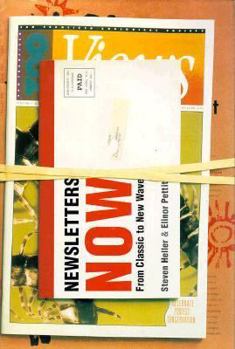Newsletters Now: From Classic to New Wave
Select Format
Select Condition 
Book Overview
No Synopsis Available.
Format:Hardcover
Language:English
ISBN:0866363386
ISBN13:9780866363389
Release Date:January 1996
Publisher:Library of Applied Design PBC International I
Length:160 Pages
Weight:1.70 lbs.
Dimensions:0.8" x 7.4" x 11.1"
Customer Reviews
1 rating
As Good As A Newsletter Gets
Published by Thriftbooks.com User , 24 years ago
Newsletters are no longer recognizable as the inexpensively printed corporate mutations between form letter and newspaper that were mailed in the late nineteenth and early twentieth centuries. Nowadays, with no holds barred newsletter layouts, "MIX Matters" appears in notepad style, "The National Design Museum" publishes in book size, and "Rewards" has the full-color look of food and travel magazines. But image, paper and text should still balance into a distinctively classical, post modern or new wave format that is comfortably short, economical and print-efficient with the hallmark specialized news bits and identifiable logo.Steven Heller also says that good newsletters are the creations of graphic designers in the post World War II tradition of Lester Beall, Brownjohn, Chermayeff & Geismar, and Paul Rand. Emphasizing that point, the author has the many striking examples in NEWSLETTERS NOW indexed in the closing pages by art designer and director, client, design firm, illustrator, and photographer. My favorite newsletter example is in fact "Alternatives," a two-color tabloid for which the full-time designer creates a different design with each issue.The samples are good illustrations of what you can learn from Thomas Bivins and William E. Ryan's HOW TO PRODUCE CREATIVE PUBLICATIONS and Allen Hurlburt's THE GRID. They also work well with Chuck Green's THE DESKTOP PUBLISHER'S IDEA BOOK and Rita and Roberta Street's CREATIVE NEWSLETTERS & ANNUAL REPORTS. And it also is interesting to compare them with THE BEST OF NEWSPAPER DESIGN and Harold Darling's FROM MOTHER GOOSE TO DR SEUSS: CHILDREN'S BOOK COVERS 1860-1960.





